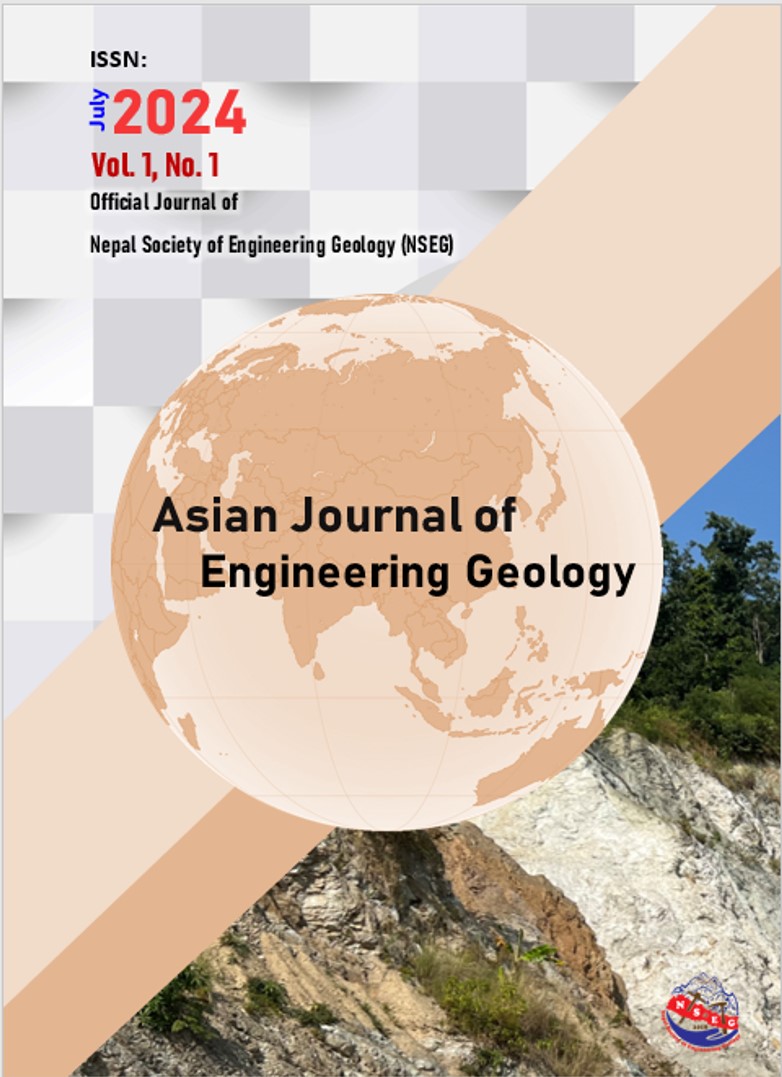Paleo landslide reactivation and threat to the people in the Nepal Himalaya
Keywords:
Landslide reactivation, Nepal Himalaya, Settlement threat, Soil investigationAbstract
Landslides are significant natural hazards influenced by factors such as rainfall, earthquakes, and human activities, posing severe risks to communities, particularly in the Nepal Himalaya. This study focuses on the reactivation of ancient landslides in Sindhupalchwok, Nuwakot, and Rasuwa Districts, where 114 distinct landslide deposits were reactivated during the monsoon season between 2019 and 2023. Field surveys identified and analyzed the geological and socio-economic factors contributing to this phenomenon. Laboratory tests on disturbed soil samples revealed low cohesion values (3 to 10.5 kPa) and a plasticity index of 3 to 7, indicating the soil’s vulnerability to deformation under saturated conditions. Additionally, increased rainfall (ranging from 2300 mm to 3200 mm) and seismic activity, particularly the 2015 Gorkha earthquake, have exacerbated instability. The study highlights the threat to 287 houses and 792 individuals residing on these landslide deposits, underscoring the urgent need for effective risk mitigation strategies to enhance community resilience against future landslide events.
References
Varnes D.J. (1978). Slope movement types and processes. In: Schuster RL, Krizek RJ (eds) Landslides, analysis and control, special report 176: Transportation research board (pp. 11–33). National Academy of Sciences, Washington, DC.
Dahal R.K. (2012). Rainfall-induced landslides in Nepal. International Journal of Erosion Control Engineering 5(1):1–8
Downloads
Published
Issue
Section
License
Copyright (c) 2024 Nepal Society of Engineering Geology (NSEG)

This work is licensed under a Creative Commons Attribution 4.0 International License.




